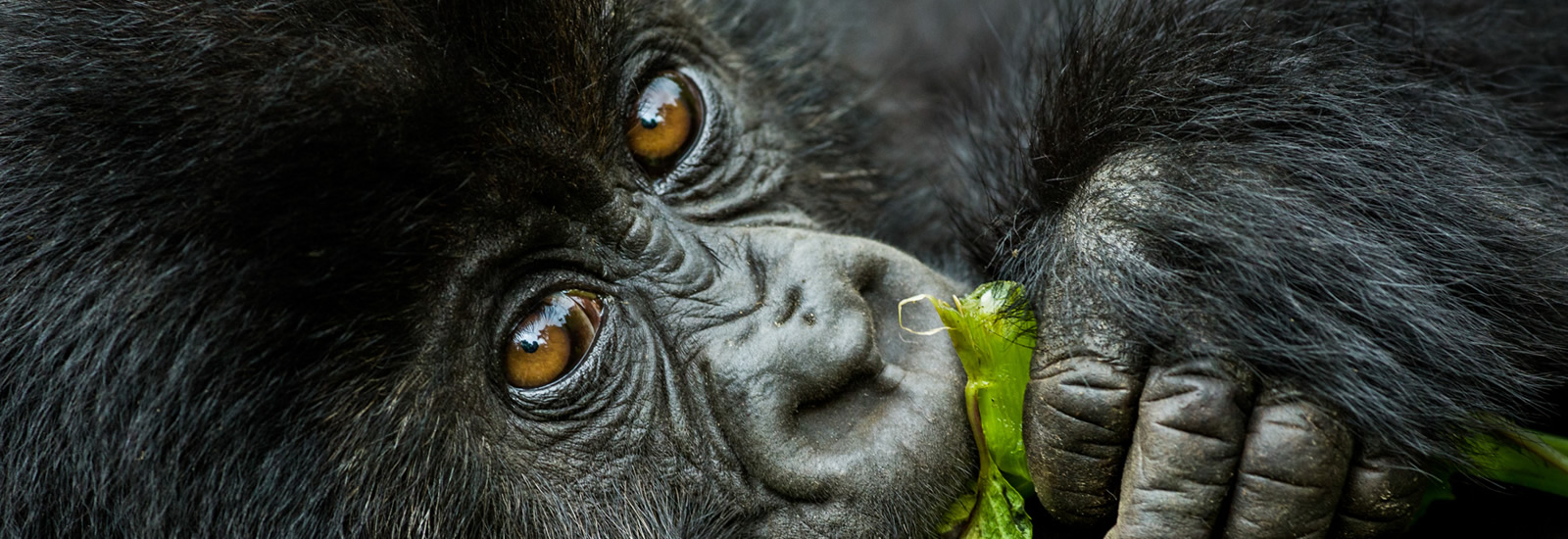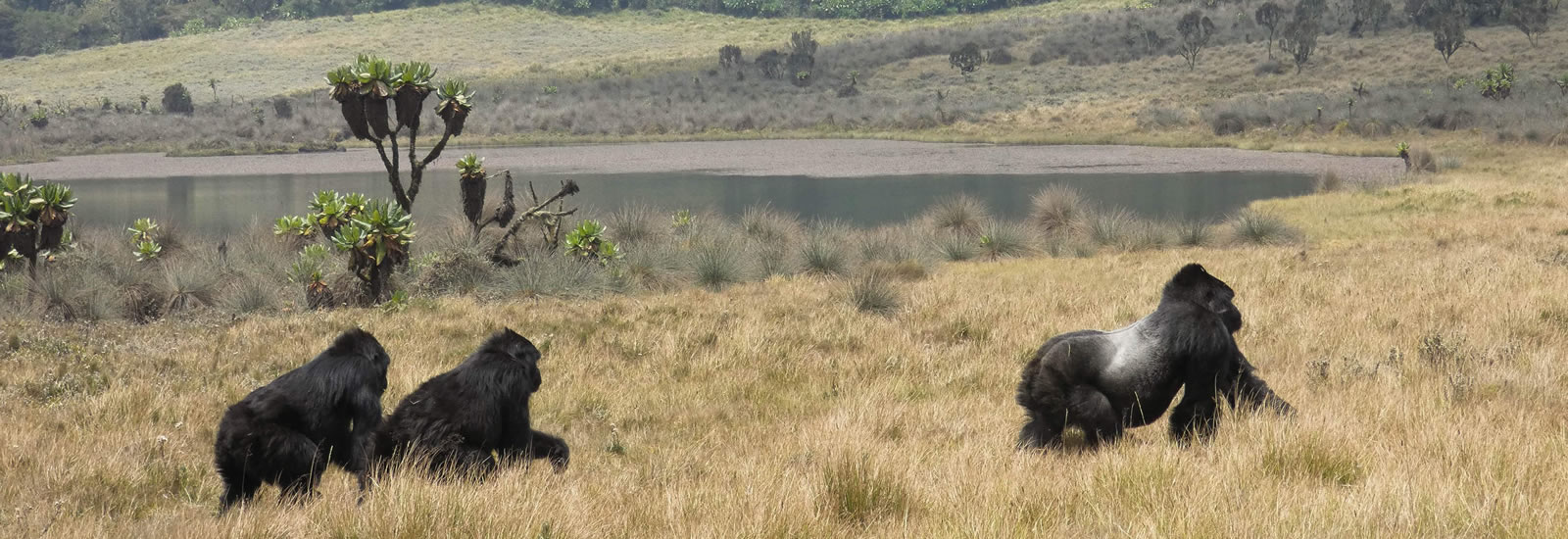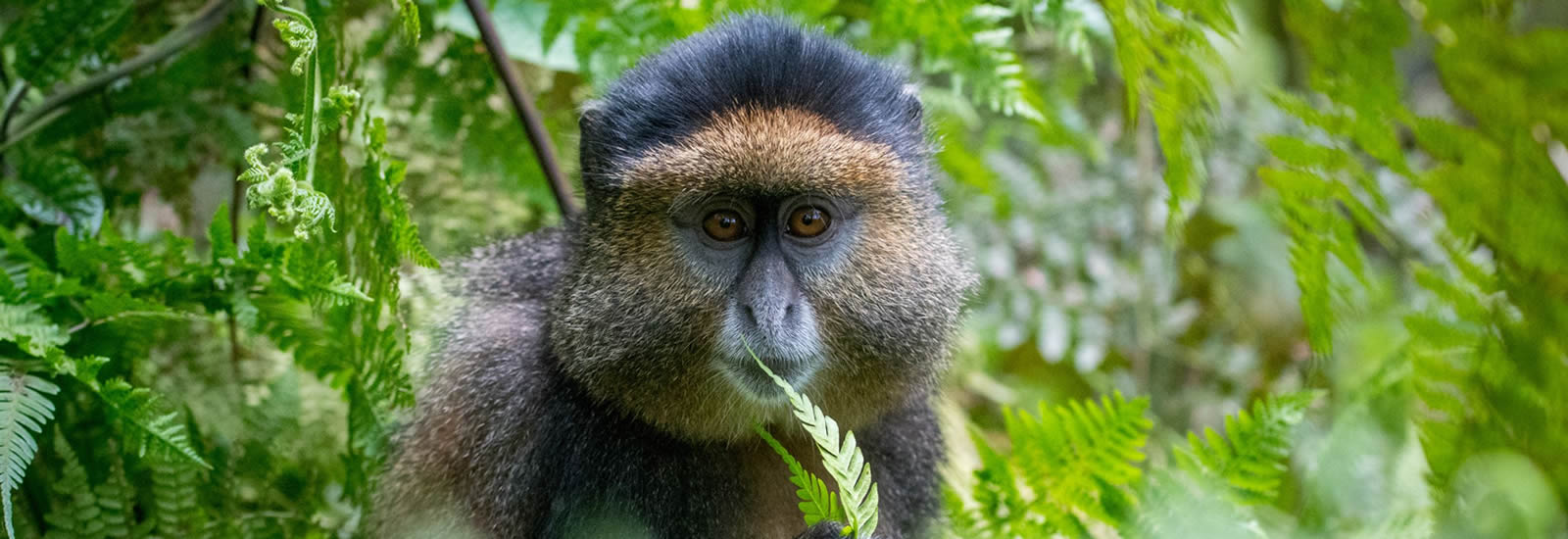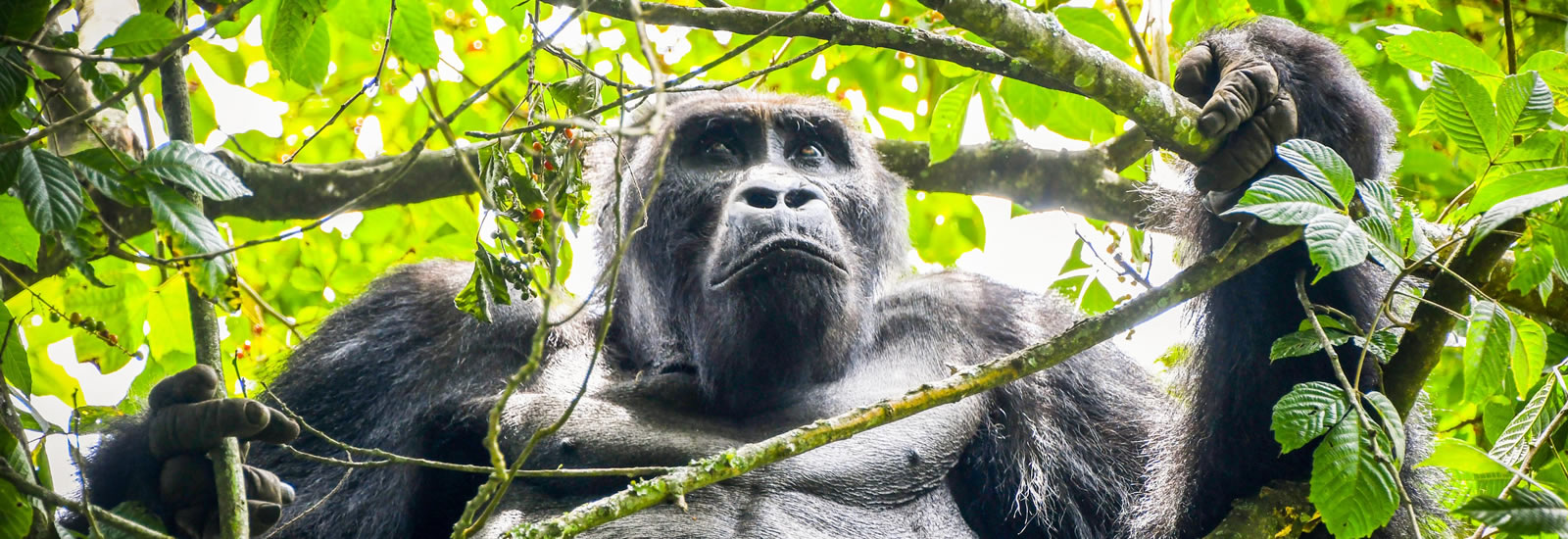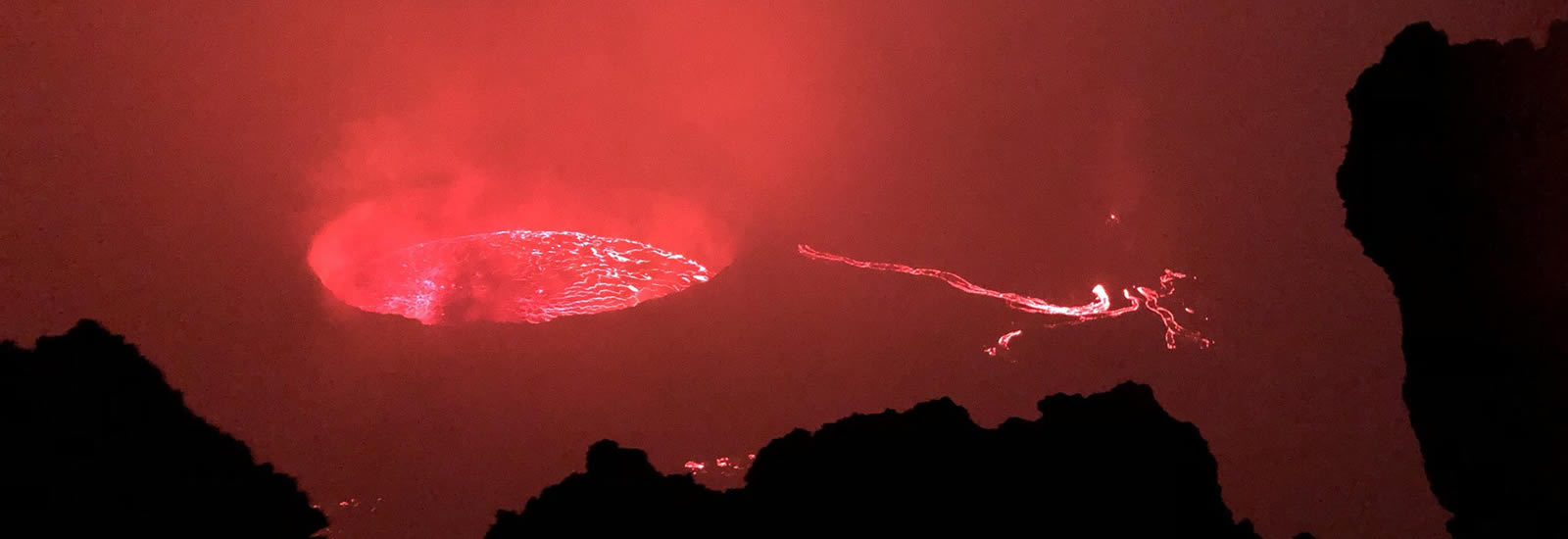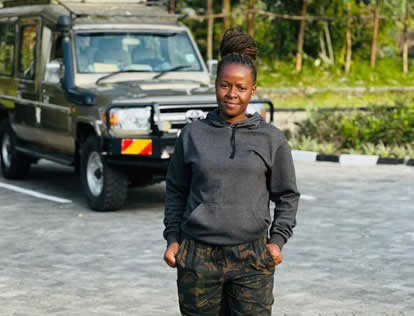Guide to Gorilla Trekking in Africa 2025- Primate Safaris Rwanda
Planing a gorilla safari in Africa- visit the complete practical gorilla trekking guide in Africa to explore the unexplored Mountain gorillas , Eastern Lowland Gorillas with destination experts from primate Safaris Rwanda. Africa’s ultimate gorilla safari offers an unparalleled opportunity to come face-to-face with one of the world’s most endangered and majestic creatures in their natural habitat.
Embarking on this extraordinary adventure takes you into the mist-covered mountains of East and Central Africa, where dense forests and dramatic landscapes provide a sanctuary for mountain gorillas. Rwanda, Uganda, and the Democratic Republic of Congo each offer unique gorilla trekking experiences, from the lush slopes of Volcanoes National Park to the deep jungles of Bwindi Impenetrable Forest.
This journey isn’t just about observing gorillas, but connecting with a species that shares over 98% of our DNA, offering a rare glimpse into their social structures, behaviours, and familial bonds.
A gorilla safari is an unforgettable experience that combines wildlife conservation, breathtaking scenery, and a sense of awe at being so close to one of Earth’s most captivating animals, making it a once-in-a-lifetime adventure for nature admirers and wildlife lovers alike.
Where to Go for Gorilla Trekking- Uganda , Rwanda & Congo
Gorilla trekking is one of the most thrilling wildlife experiences you can have, and Africa is home to some of the last remaining mountain gorillas in the world. If you are planning a gorilla trekking adventure, Uganda, Rwanda, and the Democratic Republic of Congo (DRC) are the top countries where you can go to track these incredible animals. Each of these countries offers unique trekking experiences, with different landscapes, wildlife, and cultural encounters. Here’s a simple guide to the best places for gorilla trekking in Uganda, Rwanda, and DRC.
Gorilla Trekking in Uganda
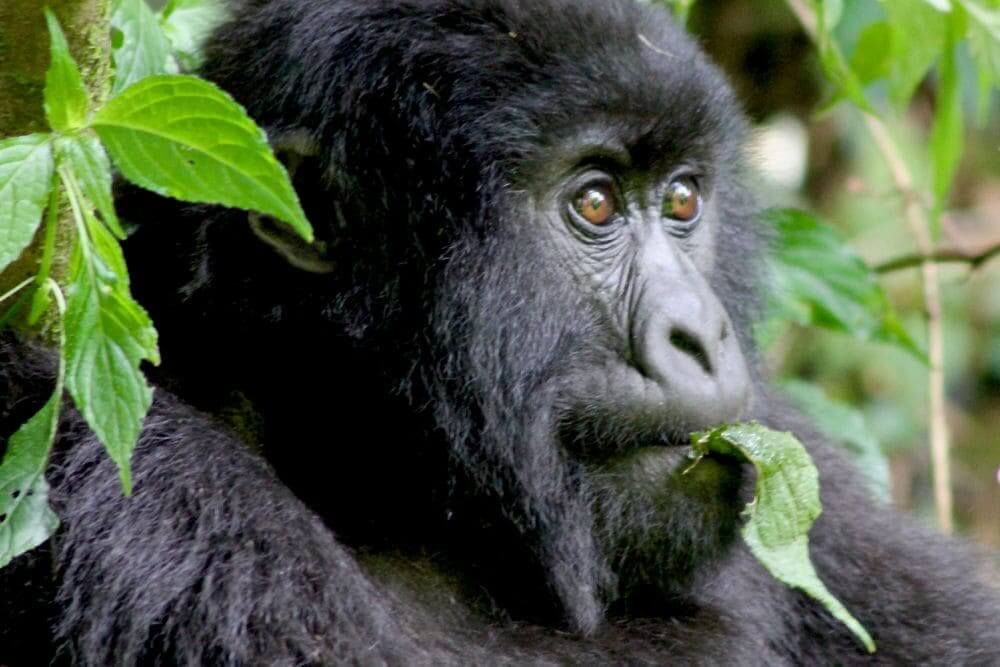 Uganda is one of the most popular destinations for gorilla trekking, with two main parks where you can track gorillas: Bwindi Impenetrable Forest National Park and Mgahinga Gorilla National Park. Gorilla Trekking permit is 800 USD per person
Uganda is one of the most popular destinations for gorilla trekking, with two main parks where you can track gorillas: Bwindi Impenetrable Forest National Park and Mgahinga Gorilla National Park. Gorilla Trekking permit is 800 USD per person
- Bwindi Impenetrable Forest National Park:
This UNESCO World Heritage Site is home to nearly half of the world’s remaining mountain gorillas, with around 19 habituated gorilla families that tourists can visit. Bwindi is located in southwestern Uganda, near the border with Rwanda and the DRC. The forest is dense and rugged, offering a true wilderness experience. The trekking can be challenging, as the terrain is often steep and muddy, but the reward of seeing gorillas up close makes it worthwhile. The gorilla groups here are spread across different sectors, such as Rushaga, Buhoma, Nkuringo, and Ruhija, each offering a slightly different experience. The trek can take anywhere from 1 to 6 hours, depending on where the gorillas are located. A highlight of Bwindi is the chance to interact with local communities, such as the Batwa people (also known as the “pygmy” tribe), who have lived in the forest for centuries. The experience here is often more remote, and you can enjoy a peaceful and authentic wildlife experience. - Mgahinga Gorilla National Park: Located in the far southwestern corner of Uganda, near the border with Rwanda, Mgahinga is a smaller park but still offers fantastic gorilla trekking opportunities. It’s part of the Virunga Mountains, which also span Rwanda and DRC. This park has fewer visitors, meaning the experience can feel more intimate. The gorillas in Mgahinga are part of the same Virunga population, and trekking here often includes spectacular views of the Virunga volcanoes. It’s a great choice for those looking for a quieter, more personal gorilla trekking adventure.
Gorilla Trekking in Rwanda: Volcanoes National Park
 Rwanda is known for its stunning landscapes, and Volcanoes National Park is the country’s prime destination for gorilla trekking. Located in the northwestern part of the country, Volcanoes National Park is part of the larger Virunga Massif, a volcanic mountain range that stretches across Rwanda, Uganda, and the DRC. This park is home to some of the world’s most famous gorillas, including the famous silverback gorilla, Karisimbi. Rwanda offers a slightly more luxurious and accessible trekking experience compared to Uganda and a Gorilla Trekking permit is 1500 USD per person, with a number of high-end lodges near the park entrance.
Rwanda is known for its stunning landscapes, and Volcanoes National Park is the country’s prime destination for gorilla trekking. Located in the northwestern part of the country, Volcanoes National Park is part of the larger Virunga Massif, a volcanic mountain range that stretches across Rwanda, Uganda, and the DRC. This park is home to some of the world’s most famous gorillas, including the famous silverback gorilla, Karisimbi. Rwanda offers a slightly more luxurious and accessible trekking experience compared to Uganda and a Gorilla Trekking permit is 1500 USD per person, with a number of high-end lodges near the park entrance.
The park has 10 habituated gorilla families available for trekking, and the treks tend to be a bit shorter and easier than those in Uganda. The terrain here is less dense, which can make the trekking experience more enjoyable for those with limited hiking experience. While Rwanda’s treks are generally considered easier, you will still have to trek through lush, hilly terrain to find the gorillas. On a clear day, you can see the stunning backdrop of volcanoes, including Mount Karisimbi and Mount Bisoke. A trek in Volcanoes National Park offers a chance to see gorillas in a beautiful, more accessible setting, and the park is also home to other wildlife such as golden monkeys and various bird species.
Gorilla Trekking in the Democratic Republic of Congo
The Democratic Republic of Congo (DRC) is home to some of the most adventurous and off-the-beaten-path gorilla trekking experiences. The DRC has two main parks where you can track gorillas: Virunga National Park and Kahuzi-Biega National Park. Gorilla Trekking permit is 400 USD per person
- Virunga National Park: Virunga is one of Africa’s oldest and most biodiverse national parks, located in the eastern part of the DRC, near the border with Rwanda and Uganda. Virunga is home to both mountain gorillas and the endangered eastern lowland gorillas, making it a rare and unique destination for gorilla trekking. The park is located in the Virunga Mountains and offers dramatic landscapes with volcanoes, lakes, and dense forests. Trekking in Virunga is generally considered to be more challenging than in Rwanda or Uganda, as the terrain can be steep, and access to the park has sometimes been restricted due to political instability. However, Virunga is well-managed, and trekking there is an adventurous experience for those seeking a more rugged, remote encounter with the gorillas.
- Kahuzi-Biega National Park: Kahuzi-Biega National Park, located in the eastern part of DRC, is home to the eastern lowland gorillas, which are a different subspecies from the mountain gorillas you find in Uganda and Rwanda. Kahuzi-Biega offers a chance to trek through lush tropical forests and observe these less-visited gorillas. The treks here are often easier due to the relatively flat terrain, and the gorillas are more relaxed, making for a peaceful experience. However, the lowland gorillas are less habituated than the mountain gorillas, so sightings may be less predictable.
The Gorilla Trekking Experience
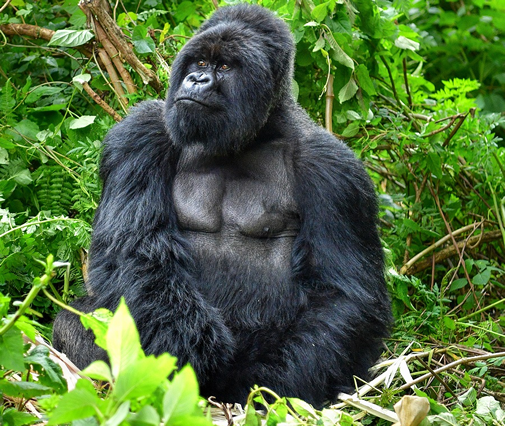 Gorilla trekking is an exciting and unforgettable experience where you get the chance to see mountain gorillas in their natural habitat. It usually takes place in the dense forests of Uganda, Rwanda, or the Democratic Republic of Congo, where these magnificent creatures live. Here’s what you can expect from a typical gorilla trekking adventure.
Gorilla trekking is an exciting and unforgettable experience where you get the chance to see mountain gorillas in their natural habitat. It usually takes place in the dense forests of Uganda, Rwanda, or the Democratic Republic of Congo, where these magnificent creatures live. Here’s what you can expect from a typical gorilla trekking adventure.
The Trek: Your gorilla trekking experience begins early in the morning, often around 7:00 AM. You will meet with your guide and a group of fellow trekkers, and you’ll head to the starting point, which is usually near the park entrance. The trek can last anywhere from 1 to 6 hours, depending on where the gorillas are located. The terrain is often steep and muddy, so you need to be prepared for some physical activity, such as hiking through thick vegetation or muddy trails. But the guides are experts at navigating the forest, so don’t worry too much about getting lost.
Finding the Gorillas: Once you enter the forest, the real adventure begins. The guides track the gorillas by following their movements, often using knowledge of where the gorillas were last spotted. Sometimes, it can take a while to find them, as the gorillas move around a lot. When the group finally spots a gorilla family, you’ll be able to get up close, though not too close. You are asked to stay at least 7 meters (about 23 feet) away from the gorillas to keep both you and them safe. You’ll be able to watch them in their natural surroundings, eating, playing, or resting. The experience is incredibly peaceful and awe-inspiring, as you observe the gorillas interact with each other just like a human family.
The Encounter: Spending an hour with the gorillas is the highlight of the trek. You’ll be amazed at how similar they are to humans. The gorillas might look at you curiously, and some may even come closer, but they are wild animals and should not be approached. The guides will give you plenty of information about the gorillas, explaining their behavior, family structures, and how they survive in the wild. This is a rare and intimate opportunity to connect with one of the most endangered species on the planet.
The After trek: After the encounter, you’ll return to the starting point, and you can reflect on the experience. Many trekkers say it’s one of the most meaningful and emotional wildlife encounters they’ve ever had. The memories of seeing a silverback gorilla or a mother with her baby will stay with you long after the trek is over.
When to Go Gorilla Trekking
Gorilla trekking is an incredible experience, but the timing of your trip can make a big difference. The best time to go gorilla trekking is during the dry seasons, as this makes the trek easier and more enjoyable. Here’s a simple guide to when you should plan your gorilla trekking adventure.
Dry Seasons: The Best Time to Go
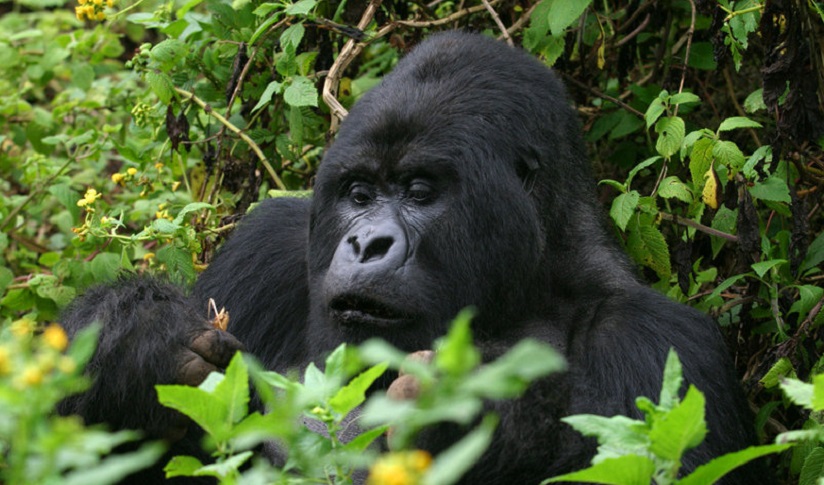 The ideal time for gorilla trekking is during the dry seasons, which are typically from June to September and December to February. These months offer the best weather conditions for trekking. The trails are less muddy, and the forest is not as thick with vegetation, making it easier to walk and spot the gorillas. Since it’s also a popular time for tourists, you’ll want to book your trek and permits well in advance.
The ideal time for gorilla trekking is during the dry seasons, which are typically from June to September and December to February. These months offer the best weather conditions for trekking. The trails are less muddy, and the forest is not as thick with vegetation, making it easier to walk and spot the gorillas. Since it’s also a popular time for tourists, you’ll want to book your trek and permits well in advance.
During these months, the weather is usually pleasant, with less rain and more sunshine. Although there can still be some rain, it’s usually lighter and doesn’t last long, which is better than trekking in wet conditions. If you want a smooth, enjoyable trek, the dry season is definitely the best time to go.
Wet Seasons: Less Crowded but More Challenging
The wet season occurs between March to May and October to November. While this is not the best time to go due to the rain, it has some advantages. The wet season means fewer tourists, so the parks and trekking groups are less crowded, and you might have more of the experience to yourself. However, the rain can make trekking more difficult. The trails can be very muddy, and it’s much harder to spot the gorillas due to the thicker vegetation. The rain also makes the trek longer and less comfortable, so you need to be prepared for wet and slippery conditions. If you choose to go during the wet season, make sure you have the right gear, such as waterproof clothing and sturdy shoes, to stay comfortable and safe while trekking. You should also be prepared for longer treks, as the guides may need more time to find the gorillas.
What to Pack for Your Gorilla Safari
Packing for a gorilla safari requires careful consideration. The trek will take you into dense forests and mountainous terrain, so you need to bring the right gear.
- Clothing: Wear long sleeves and pants to protect yourself from thorns, insects, and the cold. Light, moisture-wicking fabrics are ideal for hot days, while a warm jacket is useful for cooler mornings and evenings.
- Footwear: Sturdy hiking boots with good grip are essential. The trails can be muddy and slippery, so waterproof shoes are a good choice.
- Rain Gear: It’s always a good idea to bring a light rain jacket or poncho, as the weather in the forest can change quickly.
- Insect Repellent: Insects, especially mosquitoes, are common in the forests, so bring a good insect repellent.
- Binoculars & Camera: While you’re allowed to take photos, it’s important to avoid flash photography. A camera with a zoom lens is ideal for capturing the gorillas without disturbing them.
- Personal Items: Don’t forget essentials like sunscreen, a hat, and personal medications. Also, bring a backpack to carry your items during the trek.
Accommodation Options
Both Rwanda and Uganda offer a range of accommodation options, from budget to luxury, depending on your preferences and budget.
- Luxury Lodges: If you are looking for luxury, there are several high-end lodges near the parks. In Rwanda, places like One&Only Gorilla’s Nest, Singita Kwitonda Lodge and Bisate Lodge offer world-class facilities with incredible views of the volcanoes. In Uganda, Buhoma Lodge, Sanctuary Gorilla Forest Camp and Gorilla Heights are great choices.
- Mid-Range Lodges: There are also comfortable mid-range lodges with good facilities that provide a more affordable option, like Kinigi Guesthouse, Five Volcanoes in Rwanda and Gorilla Leisure Lodge, Ichumbi Gorilla Lodge in Uganda.
- Budget Accommodation: If you are on a tighter budget, there are more basic guesthouses, hostels, and campsites available.
Final Remarks about Gorilla Trekking in Africa
A gorilla safari in Africa is an extraordinary adventure that offers a rare opportunity to connect with one of the world’s most captivating and endangered creatures. Whether you choose Uganda, Rwanda, or the Democratic Republic of Congo, each destination offers its own unique experience, from the dense jungles of Bwindi Impenetrable Forest to the volcanic slopes of Volcanoes National Park. Whether you are a first-time traveller or an experienced adventurer, Africa’s ultimate gorilla safari promises to be a once-in-a-lifetime experience that will leave you with memories to cherish forever.


